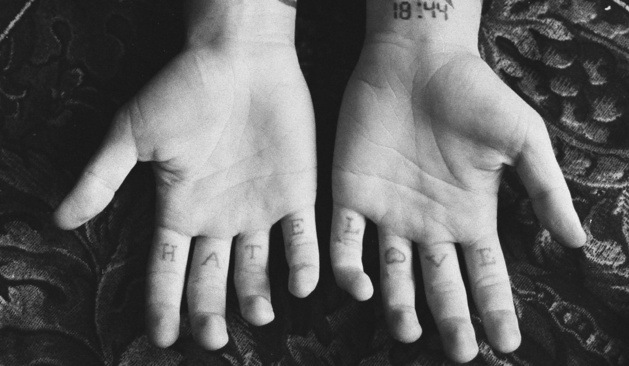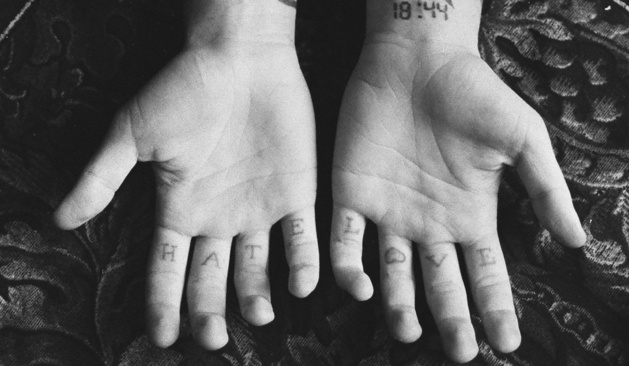
Credit Yannick Fornacciari
According to the Civil Code of Quebec, transidentity is recognized only to those who use hormonal and surgical treatment. Many associations dispute this way of conceiving transidentity only as a hormonal and surgical transformation. This legal definition of transidentity therefore considers only the transformed body and not the feelings of individuals. According to these associations, the one having the right to declare a single way of thinking about one’s body and his identity it would not be an administrative authority.
Thus, since May 5th 2014, the Centre against the Gender Oppression – an advocacy group for transgender individuals affiliated with Concordia University – has pressured the Quebec government to change of sexual designation which does not necessarily require surgery. In the fall of 2013, the National Assembly of Quebec passed a bill to allow people to change their gender designation without necessarily having to undergo surgery. In Quebec, transgender must now demonstrate to assimilate gender they want to be for two years. This assimilation requires clothing, presentation, seven days a week, even at work.
It is also needed a person who can attest this change. But this is a radical change, without any transition. For Yannick Fornacciari, this law of 2014 "does not include discrimination and intimidation which are much more important during the transition period." Remember, the suicide rate among transgender is 40% on average. Yannick Fornacciari raises the question: "One is entitled to ask whether the archetype of" transsexual "is not one of the last taboos of modern society. The lack of representation, whether in the media, politics and the arts, pushes society to think transexuality as an underground culture. "
"Today, the so-called" gender dysphoria "remains a psychiatric diagnosis and according to the DSM-V it is described as a mental health disorder. Obtaining this diagnosis yet remains the one and only way to have support by the social security scheme of hormonal treatments or operations "according to Yannick Fornacciari. Since 1996, 249 people have applied for a sex change in the Quebec civil registers. Since 2010 there exists 108 Quebec patients who underwent sex change operation, including 93 women and 15 men. If women are then the majority in the requests for sex reassignment, they still remain obscured by the media. In 2013, Germany became the first country to allow new parents to leave the gender box empty for a new child.
Yannick Fornacciari, photographer of the marginalized
The photographer Yannick Fornacciari’s work, a continuation of the documentary, tries to transcribe in an image the subject that is still evolving in contemporary mentality. Silver, black and white are his main tools for this self-taught photographer from the South of France who settled in Quebec three years ago. Having graduated with a Masters in clinical psychology and psychoanalysis, he turned early to visual art, especially to photography. "Photography and psychology are two channels through which we can have access to the other two wonderful knowledge tools and exploration of what the human being is."
Through his portraits, Yannick Fornacciari seeks to understand and question gender identity, cultural identity and all the sufferings that are underpinned (anxiety, the unconscious and the repressed). His studies greatly influence his work as a photographer, as the portrait is a way for him to take a look over his subjects, keeping a sociological aspect. "My work has long been committed to gender issues and focuses on the theme of marginality. Subjects that are in revolt position, who are seeking freedom, affirmation and identity. Freed from conventions of a system that ostracize them, they create new codes. My ambition is to bring a different light, sensitive and intimate reality of transgender. I wanted to use a forum, a bias, to expose a little known reality of the public that is often misinterpreted. "
These series of photographs show many FTM (Female to Male) individuals. For Yannick Fornacciari, photography is a way of addressing social norms, whether of beauty or gender norms. This photographer, who works with the feminist group FEMEN, seeks among others to break the standardized codes in the media, helping to give a new look to feminism: "We live in societies where women's image is constantly taken hostage by the market and patriarchy. And that's precisely what I find interesting about the FEMEN, they create new images. So at my level, I try to follow this pattern, using photography. "
Yannick Fornacciari also portrays feminists of Femen and their activities for three years now. He brilliantly depicts this new combat of feminists struggling to find a solid base in Quebec. Through his portraits in black and white, Yannick Fornacciari reveals all the discriminatory social codes and allows thereby honoring individuals marginalized by society and the media.
Yannick Fornacciari thinks of gender as not only socially constructed, but even more as referring to "the social, psychological, mental, economic, political ... These differences, which are projected in my stereotypes of individuals based on the role that society expected of them, alienate men and women at various levels. It is interesting that when we do not meet these standards, or that it does not recognize, the system takes care of marginalizing you." That's how he came up with the idea of wearing his photographic look at transgender people, a sexual minority and an underrepresented gender.
Starting in November 2014, his new series on transgender individuals wants to get rid of clichés and stereotypes , "I want to get rid of this voyeuristic look where we see only the body transformation to return to the subject, the human . I strive to do a portrait of a person, not a body." A dozen people were therefore photographed by Montreal photographer. These subjects were found on websites as well as from speaking groups on Facebook, "I think it's an interesting way to incorporate a subject of investigation. Because it is the people who come to me, and then it allows assimilating things. "
Everybody was not at the same stage of the transition, as some were taking hormones. Each portrait is followed by a short text written by the subjects themselves. These can be newspaper clippings, stories or anecdotes: "I wanted to leave them free to choose their text, this is not me talking. I give them a place to express themselves." All these subjects interviewed by Yannick Fornacciari discussed their desire for visibility. For Yannick Fornacciari, this series is a way to show the reality, one that is not represented by politicians, film and the media: "Politics does wonder about transgender and their relationship to the law and civil status change." Through these portraits, Yannick Fornacciari manages to highlight individuals who are bullied in the world, and to present them in all their humanity.
Yannick Fornaciari’s entire portfolio is on Tumblr.




























